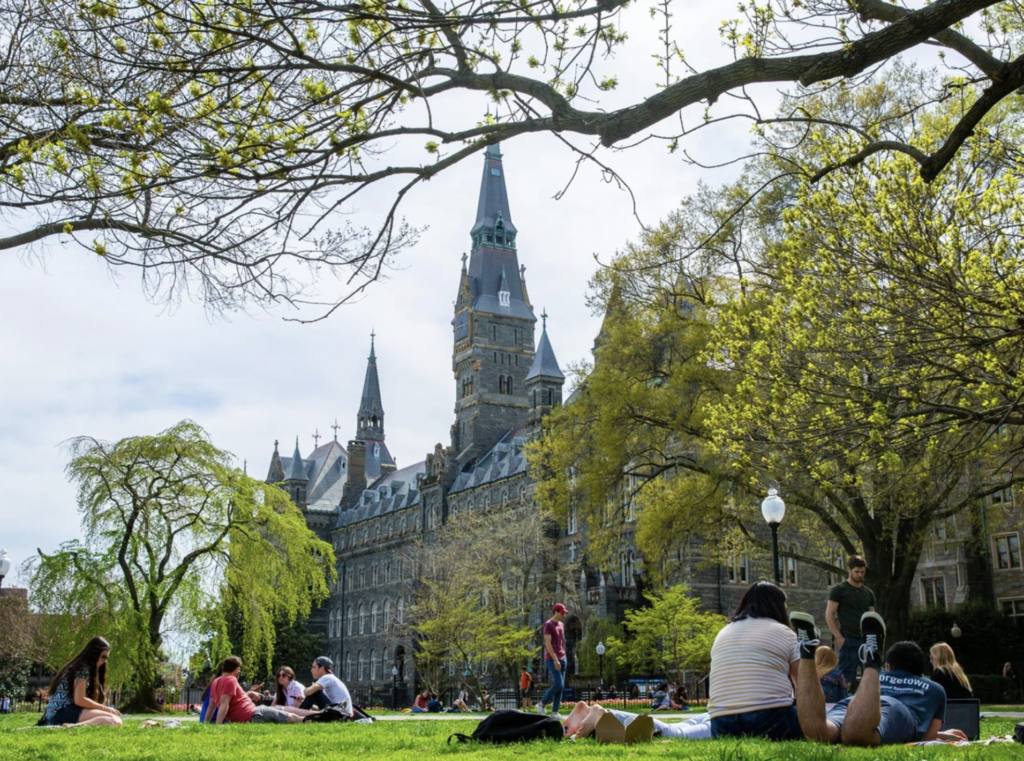For the second consecutive year Georgetown remained at the 22nd spot in the U.S. News and World Report’s 2024 Best National Universities ranking.
This year’s list, the 39th edition, shifted the list’s usual order. U.S. News debuted a revamped ranking method that strongly emphasized factors such as first-generation student success and eliminated categories such as high school class rank and class size.
“While we are proud to be ranked among the top 25 universities in the nation, we are most focused on the fundamentals of what makes our University strong,” a university spokesperson wrote to The Hoya. “Georgetown is most focused on the student experience, both inside and outside the classroom, and the formation of graduates who act as “people for others.”
In recent years, U.S. News’s ranking has often faced backlash as being an inaccurate way to evaluate universities and their offerings. The criticisms led to four of the top 14 law schools, including Georgetown University Law Center, to withdraw in November 2022 from the rankings.
In June 2023, Columbia University announced it would stop providing undergraduate data to the U.S. News rankings after it dropped to No. 18 from the second spot in the 2023 list. The drop was largely due to the finding that the university had been submitting misleading data to the survey. This year, the university moved back up to No. 12, as the rankings now rely less on data that only universities could provide.
Georgetown sociology professor Sarah Stiles said that the rankings do more harm than good.
“Georgetown will always be fine. The university was founded on certain values and a presence in the nation’s capital that will not change,” Stiles wrote to The Hoya. “I can see the value of general groupings of colleges but the hierarchy is unhelpful and produces toxic competition. The entire system was made up — it’s a social construction. People are better off not thinking about the rankings and focusing on self-actualization and being of service to others.”
Despite the repeated backlash, U.S. News continues to publish its list year after year, revising its methodology as a result of the controversies.
The central change of this year’s methods was the additional categories of first-year students’ graduation rate and graduation performance, which together account for 5% of the total score. The new methodology also considered the number of college graduates earning more than a high school graduate, a category that also makes up 5% of the total.
Five categories were removed altogether, including class size, the alumni giving rate and the number of students who were at the top of their high school class. Meanwhile, peer review and graduation rates, 20% and 16% respectively, hold the most weight overall in determining rank.
The new methodology saw many public universities, including the University of California Los Angeles, the University of North Carolina at Chapel Hill and the University of California Berkeley move up in the rankings. UNC jumped seven spots, while the two California schools both moved up five spots to tie for 15th. Private colleges such as Dartmouth College and Vanderbilt University both moved down five spots.
Georgetown University Student Association (GUSA) President Camber Vincent (SFS ’24) said he thinks the new methodology will create a more balanced and accurate reflection of the university.
“I think that the new algorithm that heavily weighted a metric on enrolling and graduating students from all backgrounds with manageable debt and post-graduate success provides a concrete target for Georgetown to shoot for in the future to improve our rankings, more so than just attempting to increase alumni giving and the average rank of incoming students,” Vincent wrote to The Hoya.
Stiles said that whether a college is the best fit for a student is ultimately much more important than a ranking.
“Once you make a numbered list, many people will fight to get as close to number one as possible. They will compromise their health, their relationships, their financial security, and their ethics for the status and prestige of a brand,” she wrote. “That’s a lot of energy that could be directed more productively and result in less anxiety.”
















John • Sep 24, 2023 at 8:11 am
The system used by US News and others ignores the fact that GT is OFF the Common Application. Hence GTs ratio of acceptances to applicants is measured on a radically different scale than Common App schools. I would guess the ratio suppresses GTs selectivity by a factor of 2:1 meaning it’s 2x as hard to get into than the statistics indicate.